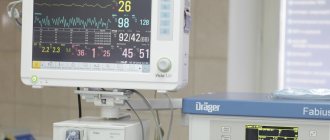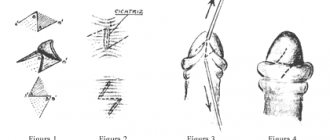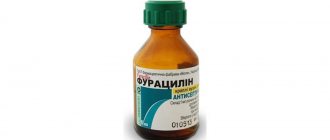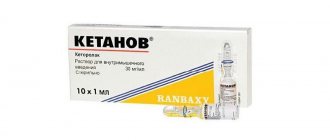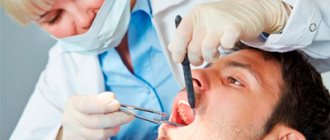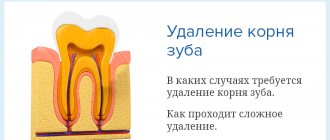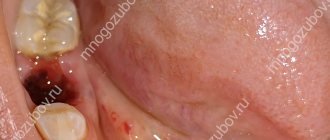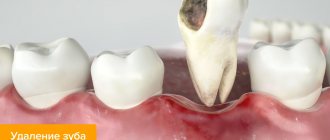Postcholecystectomy syndrome (PCES) is not the most common phenomenon in gastroenterology. It is generally accepted that PCES belongs to the group of gallbladder diseases. In fact, this is not even a disease, but a collective name for a set of symptoms that appear immediately or shortly after surgery on the bile ducts or removal (resection) of the gallbladder.
Until now, both therapists and surgeons find it difficult to clearly determine the causes of the development of this syndrome. Doctors tend to use the term PCES only to make a preliminary diagnosis in operated patients1.
Symptoms of postcholecystectomy syndrome
At its core, PCES is a consequence of surgery for resection (removal) of the gallbladder. This means that after resection the patient may experience unpleasant symptoms, such as:
- dyspepsia or disruption of the normal functioning of the stomach, manifested in the form of bitterness in the mouth, nausea, bloating and intestinal upset;
- pain in the right hypochondrium with transition to the right collarbone or shoulder. The intensity of pain can vary, from unexpressed aching to acute burning;
- general weakness, pale skin (appears against the background of poor absorption of food and developing vitamin deficiency).
With PCES, other symptoms are possible due to exacerbated diseases:
- exacerbation of cholangitis - inflammation of the bile ducts - is expressed in a long-lasting temperature in the range of 37.1-38.0 ° C;
- Cholestasis (stagnation of bile in the liver tissue) can cause severe jaundice2.
Heartburn in children
In addition to problems with the digestive tract and dietary errors, heartburn in children can be caused by completely non-trivial reasons:
- neurological pathology,
- scoliosis,
- cystic fibrosis,
- ENT pathology,
- lung diseases.
In most children, heartburn is not as severe as in adults. However, unpleasant sensations cause discomfort to babies. Infants arch their backs, often burp, release gases and are capricious. At the same time, even with the slightest nutritional disorder in children, pain comes to the fore. Even slight bloating causes regularly recurring attacks of intestinal colic, and heartburn often leads to vomiting and refusal to eat. This can lead to insufficient weight gain, and uncontrollable vomiting quickly leads to dehydration.
Tips for parents for heartburn in children
- After feeding, the baby should be held upright for a while.
- If you have heartburn, first of all you should analyze your diet and diet, exclude all foods that cause heartburn (including limiting carbohydrates).
- Don't delay visiting the pediatrician. Against the background of prolonged heartburn and indigestion, anemia, apnea, and wheezing in the lungs may develop.
Important! It is necessary to exclude congenital anomalies of the digestive sphincter, intolerance to milk proteins and celiac disease.
Reasons for the development of postcholecystectomy syndrome
The causes of postcholicystectomy syndrome and its development are often associated with disruption of the normal functioning of the sphincter of Oddi (orbicularis muscle). The sphincter of Oddi is a smooth muscle that is located in the lower part of the duodenum and is responsible for regulating the supply of bile and pancreatic juice to the duodenum3.
If we consider that PCES most often affects patients who have undergone surgery to remove the gallbladder4, then the mechanism of occurrence of this syndrome can be explained as follows:
- after the operation, the sphincter, which normally opens when the gallbladder is full, does not receive a signal about filling, as a result of which it is almost constantly under tension;
- due to the absence of a bladder, bile enters the duodenum in a diluted state, which increases the pressure inside the intestinal walls. In addition, bile itself has a bactericidal effect and a change in its composition can lead to intestinal infection5.
But sphincter of Oddi dysfunction may not always be caused by removal of the gallbladder. Sometimes the cause of the syndrome is advanced gastrointestinal diseases* (chronic colitis or gastritis, peptic ulcer) and chronic pancreatitis) - a disease of the pancreas, as well as errors in preoperative examination.
Symptomatic therapy
If the symptom is observed quite rarely and is not accompanied by other unpleasant signs of the gastrointestinal tract, belching can be dealt with using non-drug means. The main factor is the normalization of eating habits: avoiding fatty, smoked and fried foods, limiting alcohol and carbonated drinks, which cause stomach distension and gas formation. You need to eat food 4-5 times a day in small portions; after eating, you should not bend over or do heavy physical work.
Bitter belching that lasts more than 5 days is a sign of a disease of the digestive or biliary system and requires contacting a specialist. Before undergoing a full examination and making a clinical diagnosis, medications can be used to reduce unpleasant symptoms: prokinetics to improve gastrointestinal motility and prevent the reflux of duodenal contents into the gastric cavity, choleretic drugs to normalize the rhythm of bile secretion. For concomitant pain syndrome, antispasmodics are used.
Diagnosis of postcholicystectomy syndrome
Difficulties in accurately determining the causes that led to the development of PCES and the vagueness of the very definition of the syndrome require a thorough examination of the patient. In order to choose the right treatment, it is necessary to clearly establish what led to the appearance of PCES.
That is why effective diagnosis of postcholicystectomy syndrome includes several methods:
- collection of anamnesis data - the doctor carefully studies old medical reports and records, paying close attention to preoperative diagnostics and the protocol of the operation;
- clinical examination of the patient;
- laboratory tests - clinical and biochemical blood test, stool test for protozoa and worm eggs, general urine test;
- ultrasonography;
- endoscopy of the bile ducts;
- Magnetic resonance imaging or computed tomography of the abdomen6.
Surveys
The diagnostic search is aimed at a comprehensive assessment of the functional and morphological state of the gastrointestinal tract. A gastroenterologist examines patients with bitter erection. Particular attention is paid to the study of the hepatobiliary system. To establish the root cause of belching with an unpleasant aftertaste, a set of laboratory and instrumental methods is recommended, the most informative of which are:
- Radiography
. For a detailed study of the gallbladder and biliary tract, RCCP or percutaneous cholangiopancreatography is used. Studies make it possible to assess the degree of contractile dysfunction, visualize stones, and signs of the inflammatory process. To exclude gastrointestinal pathology, radiography with oral contrast is performed. - Endoscopy
. Since belching can be associated with damage to the duodenal zone, patients are shown endoscopy, which visualizes the mucous membrane of the upper digestive tract and reveals signs of various organic diseases. If necessary, to clarify the diagnosis, a biopsy of pathologically changed areas is performed with histological analysis of the material. - Duodenal sounding
. Consecutive collection of several portions of bile on an empty stomach and after the administration of drugs that stimulate bile secretion is a valuable method in detecting pathologies of the biliary tract. The doctor evaluates the amount of bile secretion received and studies its microscopic and biochemical composition. If necessary, bacteriological culture is carried out. - Ultrasonography
. Abdominal ultrasound is used as a non-invasive screening method that provides rapid scanning and determination of the pathology of individual organs. Targeted sonography of the gallbladder and bile ducts allows us to identify stones, signs of inflammation and suppuration of the organ. - Stool analysis
. For pathologies manifested by bitter erection, changes in the coprogram are typical, therefore all patients are prescribed macroscopic and microscopic analysis of stool. If the patient has signs of a probable infectious process, bacteriological culture is performed. Additionally, the Gregersen reaction to occult blood is performed.
As additional research methods, a biochemical blood test is used to determine the level of bilirubin fractions, the concentration of alkaline phosphatase, ALT and AST, and serological tests to detect antibodies to intestinal parasites. According to indications, in complex and doubtful cases, scintigraphy of the biliary tract and liver is performed.
Duodenal sounding
Treatment of postcholicystectomy syndrome
Since PCES is not an independent disease, treatment of the syndrome is always determined by its causes. Not knowing how to properly treat postcholicystectomy syndrome can only aggravate the condition and increase unpleasant symptoms.
The principles of treatment for PCES include two key points:
- collection of anamnesis data - the doctor carefully studies old medical reports and records, paying close attention to preoperative diagnostics and the protocol of the operation;
- eliminating the causes of the syndrome;
- prevention and treatment of suspected complications.
Treatment is mainly based on:
- diet therapy;
- drug treatment;
- surgery (according to indications)7.
Together with comprehensive treatment, these measures can reduce the severity of symptoms of PCES8.
Development of inflammation in the esophagus (esophagitis)
In gastroesophageal reflux disease, food, acid, and digestive juices back up into the esophagus. Over time, this causes irritation and swelling of the mucous membrane lining the inside of the esophagus. This is esophagitis. If acid exposure in the esophagus is observed for just a few weeks, then inflammation of the mucous membrane can already develop. This can cause discomfort and even pain along the midline of the abdominal wall, “in the pit of the stomach,” where the right and left ribs meet at the sternum. This inflammation makes the esophagus vulnerable to even more dangerous conditions - erosions or scars.
The use of enzyme preparations in postcholicystectomy syndrome
In some cases, PCES may be accompanied by disorders of the digestive system. This is due to the fact that food intake becomes a signal for the production of bile and pancreatic enzymes. If the signal does not arrive or arrives intermittently, subsequent events are also disrupted. As a result, food is not processed properly, and the body does not receive enough nutrients. This can affect the general condition of the body and manifest itself as heaviness after eating, discomfort, bloating or diarrhea.
Enzyme preparations have been developed to support digestion; they deliver enzymes from the outside to compensate for their lack in the body. The flagship among such drugs is Creon®.
The drug is available in the form of capsules containing hundreds of small particles - minimicrospheres. They do not exceed 2 mm in size, which is recorded as recommended in world and Russian scientific works9,10. The small particle size allows Creon® to recreate the digestive process as it was intended in the body, and thereby cope with unpleasant symptoms. Dosages of the drug are usually selected by a doctor, however, in accordance with modern recommendations, the starting dosage is considered to be 25,000 units10.
To learn more
An important stage in the treatment of PCES is enzyme therapy, because In many cases of PCES, pancreatic function is impaired and enzyme deficiency occurs11. Because of this, digestive problems arise, manifested in the form of unpleasant symptoms such as abdominal pain, heaviness in the stomach, flatulence and diarrhea. In addition, the lack of enzymes affects the quality absorption of nutrients: the body does not receive the necessary vitamins and minerals.
Creon® is a modern enzyme preparation that replenishes the deficiency of its own enzymes and promotes better absorption of food and improved digestion. More information about the drug can be found here.
Omez 10 mg for heartburn
Omez 10 mg belongs to the group of drugs called proton pump inhibitors, which are used to treat heartburn4. The drug helps suppress the production of acid in the stomach. Omez 10 mg is recommended to be taken 30 minutes before meals so that it has time to reach the parietal cells of the stomach and block the work of the proton pump - the last stage of acid production. The maximum recommended course of treatment without consulting a doctor is 14 days4.
Omez 10 mg is available in a special aluminum strip, which protects the drug from the effects of environmental factors. Pillets (small granules containing the active substance inside) have three layers, two of which contribute to the full delivery of the active substance to the parietal cells. The drug undergoes 37 control tests. It is recommended to take 2 capsules of Omez 10 mg per day4.
The causes of heartburn after eating sweets are the excessive production of stomach acid. Omez 10 mg helps reduce the production of this acid, so it can be used to treat and combat heartburn and sour belching caused by sweets4.
Bibliography:
- I.G. Pakhomova. Heartburn: modern principles of examination and treatment of patients // RMJ. 2015. No. 21. pp. 1249–1252. https://www.rmj.ru/articles/gastroenterologiya/Izghoga_sovremennye_principy_obsledovaniyai_lecheniya…
- Ivashkin V.T., Maev I.V., Trukhmanov A.S., Baranskaya E.K., Dronova O.B., Zayratiants O.V., Sayfutdinov R.G., Sheptulin A.A., Lapina T. L.L., Pirogov S.S., Kucheryavyi Yu.A., Storonova O.A., Andreev D.N. Clinical guidelines of the Russian Gastroenterological Association for the diagnosis and treatment of gastroesophageal reflux disease. Ros journal gastroenterol hepatol coloproctol 2017; 27(4):75-95. (https://webmed.irkutsk.ru/doc/pdf/gerdru.pdf)
- Osadchuk A.M., Davydkin I.L., Gritsenko T.A., Khairetdinov R.K., Kurtov I.V., Danilova O.E., Rogozina L.A., Kosyakova Yu.A., Krivova S. .P. Heartburn syndrome. Current issues of pathogenesis, differential diagnosis and treatment // Modern problems of science and education. – 2021. – No. 5.; URL: https://www.science-education.ru/ru/article/view?id=26974 (access date: 09/22/2020).
- Instructions for use of the medicinal product for medical use OMEZ®10 mg LP 00328 dated 07/11/17 Date of access 09/22/20.
Barrett's esophagus
If left untreated for many years, persistent acid reflux can form changes in cells known as Barrett's esophagus, which is considered a precancerous condition. This condition does not cause many symptoms other than those of reflux. A doctor can diagnose it by performing an endoscopy.
If you have heartburn more than twice a week for a long time, or if you have symptoms of gastroesophageal reflux disease that are getting worse or you have discovered new ones that you didn't have before, these are all reasons to get checked and have an endoscopy.
Esophageal ulcers
Stomach acid can erode the lining of the esophagus, causing sores and ulcers. Esophageal ulcers are different from stomach ulcers, which are usually caused by bacteria. People with wounds and sores may spit up blood and may also vomit blood. They may see blood in their stool. The blood may be red, cherry red, or like coffee particles. In stool, blood from the esophagus and stomach usually turns black when passing through the small intestine, the color and appearance of oil - viscous, slippery, and difficult to wash off.
Contact your doctor immediately if you have these symptoms. Endoscopy can detect ulcers of the esophagus. Acid-blocking or acid-lowering medications may make them disappear.
Why do we need to treat bitterness in the mouth?
Since an unpleasant taste in the mouth is a symptom of some pathology, a comprehensive examination is needed, without which it is impossible to establish a diagnosis. Our clinic has the latest equipment for ultrasound diagnostics of the liver and gallbladder, gastroscopy, etc., which help identify the pathological process in a short time. Our own laboratory allows you to get test results within a few hours. It is the quick examination process that attracts many Moscow residents to our clinic, as well as experienced, qualified staff ready to help every patient.

